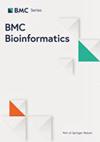从表达数据中识别失调基因子网络的蚁群优化技术
IF 2.9
3区 生物学
Q2 BIOCHEMICAL RESEARCH METHODS
引用次数: 0
摘要
在生物医学研究中,高通量实验技术能让人们更深入地了解通路扰动。因此,使用高通量实验技术对于确定分子靶点以及随后开发适合各种疾病的治疗方法至关重要。对所生成数据的经典解释,如差异基因表达和通路分析,在寻找基因与疾病的关联时忽略了所研究基因之间的相互联系。鉴于这些相互联系是细胞过程的核心,近来人们对将其纳入此类研究产生了浓厚兴趣。后者可以在基因相互作用网络中检测出导致复杂表型的基因模块。现有的方法要么是施加基于半径的限制,要么是以牺牲对大型模块的统计偏差为代价自由扩展模块。我们受蚁群优化的启发,提出了一种启发式方法,利用基于距离的搜索限制和惩罚,而不是基于半径的限制,来进行基因水平的评分和模块识别。我们使用阿尔茨海默病、帕金森氏症和亨廷顿氏症这三种不同神经退行性疾病的数据集进行了三次独立实验,并将实验结果与其他方法进行了比较。我们报告了每种疾病的富集分析结果和基因水平评分的一致性。结果表明,与现有方法相比,所提出的方法总体上表现出更高的稳定性。它能在所有三个数据集中产生稳定而有意义的富集结果,这三个数据集的病例与对照比例和样本量各不相同。所提出的基于网络的基因表达分析方法成功地识别了与某种疾病相关的失调基因模块。我们使用基于蚁群优化的启发式方法,在没有半径限制的情况下进行基于距离的搜索。实验结果表明,我们的方法在确定高相关性模块的优先级方面具有有效性和稳定性。我们的工具可在 github.com/GhadiElHasbani/ACOxGS.git 上公开获取。本文章由计算机程序翻译,如有差异,请以英文原文为准。
Ant colony optimization for the identification of dysregulated gene subnetworks from expression data
High-throughput experimental technologies can provide deeper insights into pathway perturbations in biomedical studies. Accordingly, their usage is central to the identification of molecular targets and the subsequent development of suitable treatments for various diseases. Classical interpretations of generated data, such as differential gene expression and pathway analyses, disregard interconnections between studied genes when looking for gene-disease associations. Given that these interconnections are central to cellular processes, there has been a recent interest in incorporating them in such studies. The latter allows the detection of gene modules that underlie complex phenotypes in gene interaction networks. Existing methods either impose radius-based restrictions or freely grow modules at the expense of a statistical bias towards large modules. We propose a heuristic method, inspired by Ant Colony Optimization, to apply gene-level scoring and module identification with distance-based search constraints and penalties, rather than radius-based constraints. We test and compare our results to other approaches using three datasets of different neurodegenerative diseases, namely Alzheimer’s, Parkinson’s, and Huntington’s, over three independent experiments. We report the outcomes of enrichment analyses and concordance of gene-level scores for each disease. Results indicate that the proposed approach generally shows superior stability in comparison to existing methods. It produces stable and meaningful enrichment results in all three datasets which have different case to control proportions and sample sizes. The presented network-based gene expression analysis approach successfully identifies dysregulated gene modules associated with a certain disease. Using a heuristic based on Ant Colony Optimization, we perform a distance-based search with no radius constraints. Experimental results support the effectiveness and stability of our method in prioritizing modules of high relevance. Our tool is publicly available at github.com/GhadiElHasbani/ACOxGS.git.
求助全文
通过发布文献求助,成功后即可免费获取论文全文。
去求助
来源期刊

BMC Bioinformatics
生物-生化研究方法
CiteScore
5.70
自引率
3.30%
发文量
506
审稿时长
4.3 months
期刊介绍:
BMC Bioinformatics is an open access, peer-reviewed journal that considers articles on all aspects of the development, testing and novel application of computational and statistical methods for the modeling and analysis of all kinds of biological data, as well as other areas of computational biology.
BMC Bioinformatics is part of the BMC series which publishes subject-specific journals focused on the needs of individual research communities across all areas of biology and medicine. We offer an efficient, fair and friendly peer review service, and are committed to publishing all sound science, provided that there is some advance in knowledge presented by the work.
 求助内容:
求助内容: 应助结果提醒方式:
应助结果提醒方式:


